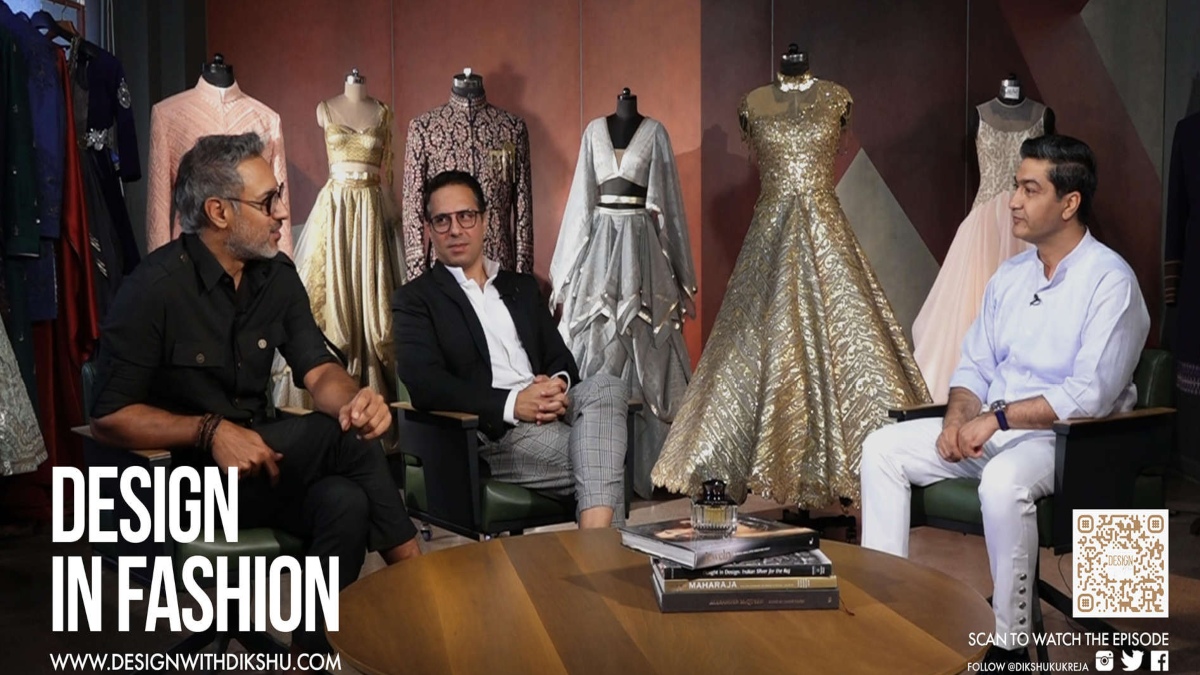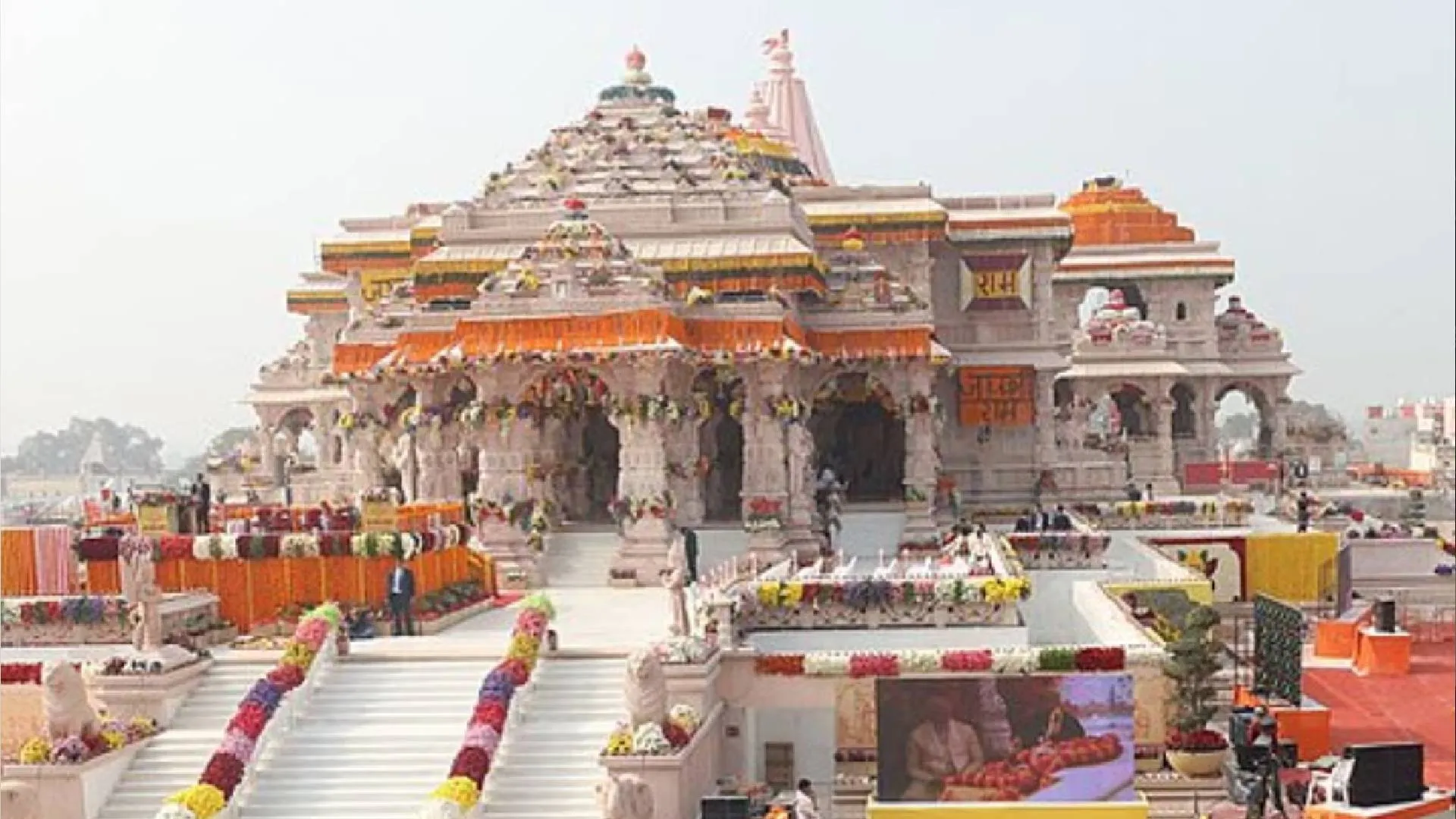This might come as a surprise to most of the readers this week, but architecture and fashion are closely related fields regardless of their execution contrast. Dikshu Kukreja’s fascinating journey of design through interiors, arts, handicrafts, space design, architecture, and more has enabled us to absorb a new side of creative pursuits. He has successfully also been able to increase awareness towards design sensitivity in our daily lives. With his guests this weekend, Dikshu uncovers sustainability in fashion design and discusses routes of rethinking the ways of living with the globally renowned fashion brother duo, Shantanu Mehra and Nikhil Mehra of the Delhi-based Shantanu and Nikhil fashion label.
In the latest episode of ‘Deciphering Design with Dikshu’, we discover one of the most awaited and intriguing worlds of fashion and lifestyle. Although the relationship between architecture and fashion was realised more than a century ago, the connection between them has rarely been explored by designers, architects, or even historians. Both the fields hold a contemporary relationship in considerable depth when you look at concepts, design, techniques, visuals, and materials.
“Both fashion and architecture have the ability to inspire one another and thereby elevate each other to another experiential level,” says Dikshu.
As sustainability has become the buzzword, he deciphers the geometry, drapery, and trends that will lead the way forward in the coming times. Inspired by the city’s architecture, Shantanu and Nikhil are making their presence felt through their cutting-edge fashion techniques.
“Fashion has got to do a lot with living spaces. We can talk about Delhi as a city. It’s a historic city. You are surrounded and encapsulated by the amazing monuments and we’ve also grown up visiting the tombs or the parks. Red Fort used to be something, where you see the flag being hoisted, India gate, The Lutyens — these are spaces that made us who we are. Also, the same spaces had a sense of influence in design when it came to fashion,” says Nikhil as he talks about his inspiration towards choosing fashion as a field of expertise.
India has a great history and a lot of the fashion design elements are inspired by architecture and history. On recalling the fashion trends in the 70s compared to today, Nikhil adds, “If you remember our dad’s times, he would wear kurtas that would drop shoulders, little longer, covering the knees and the churidar was rather fitted but the kurtas were equally loose. A lot of the references came from the architectural well-being of the city and when you look at the architectural well-being, you also realise that everything that was made in Delhi was based on its temperature and the seasons. So, the colour patterns like the terracotta, and then going to Dholpur, and then it came to Lutyens Delhi and the pure whites. They were representatives of the rainy season that mainly Delhi had, it enjoyed all four seasons. That also took effect on the clothing that was created by designers or makers back then in the 70s. When we now look again at Delhi, as a Shantanu & Nikhil brand, we are so inspired by Delhi’s architecture — we’ve come back and gotten the same structure, fluidity but given it a modern twist, making it slightly more fitted, younger more cutting edge”
While design and the designer are the vanguards of all the work and showcase, one ignored aspect of the design is its correlation with business. On discussing the importance of the business aspect to design, Shantanu says, “Art will always be at the forefront and commerce will never come and push it. It is still the same, it is still art, but it is the art that has become more understandable and sustainable, and commerce just follows. No art, there’s no commerce.”
He adds,“We’ve been able to evolve, as artists, as designers. I think a bit of fearlessness is definitely required in design, be it architecture or fashion. You’ve got to change gears when you feel society is changing and what is it that you do to instigate a spark in what you do with design.”
Nikhil and Dikshu are both designers first and when asked about design relevance in architecture, Dikshu replies, “Buildings, I believe are for posterity. We might go away far sooner than the buildings we design. It is very important that we keep the ethos, and fortunately, we’ve been able to do that.”
He found himself answering some of the most interesting questions about design when asked about masculinity or femininity in designing buildings.
“Buildings cannot be the harsh insertions to our city or into nature. We need to be softer, more fluid, in that sense more curvaceous, to whether we call it sort of more feminine kind of design, I am not so sure but yes it was that aspect of it and it still continues to be. I do believe that whatever it might be; whether it eventually takes perceivable masculinity to it or femininity — the point is that it should be contextual. I always say this again and again that a building must seem like it belongs there. Whatever we create as a built form, it should appear as if it naturally belongs there rather than forcefully insert itself into that site,”asserts Dikshu.
In India design is not at the epicentre of conversations and Dikshu’s effort with his design journey is to bring design to the forefront of projects, discussions and chart an execution around it rather than it being reversed.
As Shantanu and Nikhil share their journey, inspirations and design adaptability to society, they were a treat to watch in Saturday’s episode. Do visit www.designwithdikshu.com to watch the entire episode of Silhouettes of a Needle.
Join Dikshu Kukreja in his journey of creating awareness towards design by following him on Twitter (@DikshuKukreja) and Instagram (@dikshukukreja) and spreading awareness about design. You can also directly connect with him and find answers to your curiosities on design by using the hashtag #designwithdikshu on Instagram or Twitter.























